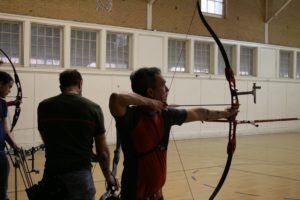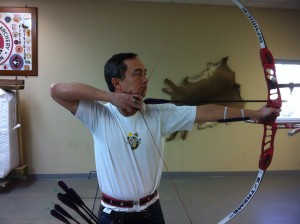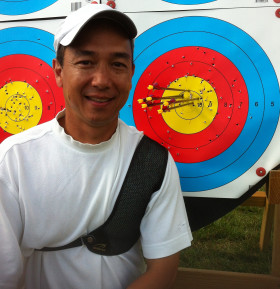For those of us living in colder climes, we are on the cusp of outdoor season. Arizona Cup is fast approaching and we now turn our thoughts to shooting at greater distances.
I’ve given this transition a lot of thought. Most of us, whether we admit it, or not, have a mental shift when we move outdoors. Many of us are burdened by what I’ll call a ‘precision complex’ when shooting indoors. This want to control our shots, to create smaller variances, causes all kinds of maladies, the greatest being a lack of rhythm to our shooting.
Every year when moving outdoors, at least in my shooting, a certain freedom returns to my archery shot. The ‘precision complex’ gets shoved aside, as the target size expands and expectations of perfection no longer exist. To be sure, target size, aiming and miss variances, etc., are relatively equal, given the distances involved. But without fail, there is a shift in my perception of how my shot needs to be executed. Yeah, I know, I know, there should be no change at all. That fact does not change the truth that there is a change.
Why? Why is there a shift?
For me, it comes down to what the target shows me at 70m. My reality is that most shots which are not executed in rhythm and with dispatch are not in an acceptable group down range. The penalty for my ‘precision complex’ is a poor group. Therefore I adapt to the realities which the target has shown me. I make smoother shots, with more rhythm and more speed.
Indoor shooting perhaps has allowed that internal need for precision to bleed through because there is not a great penalty for over controlling the shot. Perhaps I should say there is a perceived lack of penalty for an over controlled shot. Let me flesh that thought out a bit. A poorly executed shot indoors might result in shooting an 8. Therefore, unless my form really breaks down, I get arrows down range with all sorts of form anomalies. I can feed my inner ‘precision complex’ by holding the shot a bit longer, or aiming a bit harder, or making sure everything in my aura is exactly right. Ha!. I guess that last one may be an exaggeration, but you get my drift.
I suppose there are a few take aways here, but what I wish for all is a freedom to envelop your shot as begin your outdoor season. Shooting with good form is still important, but now is the time to channel your inner John Daly. Grip it and rip it!




